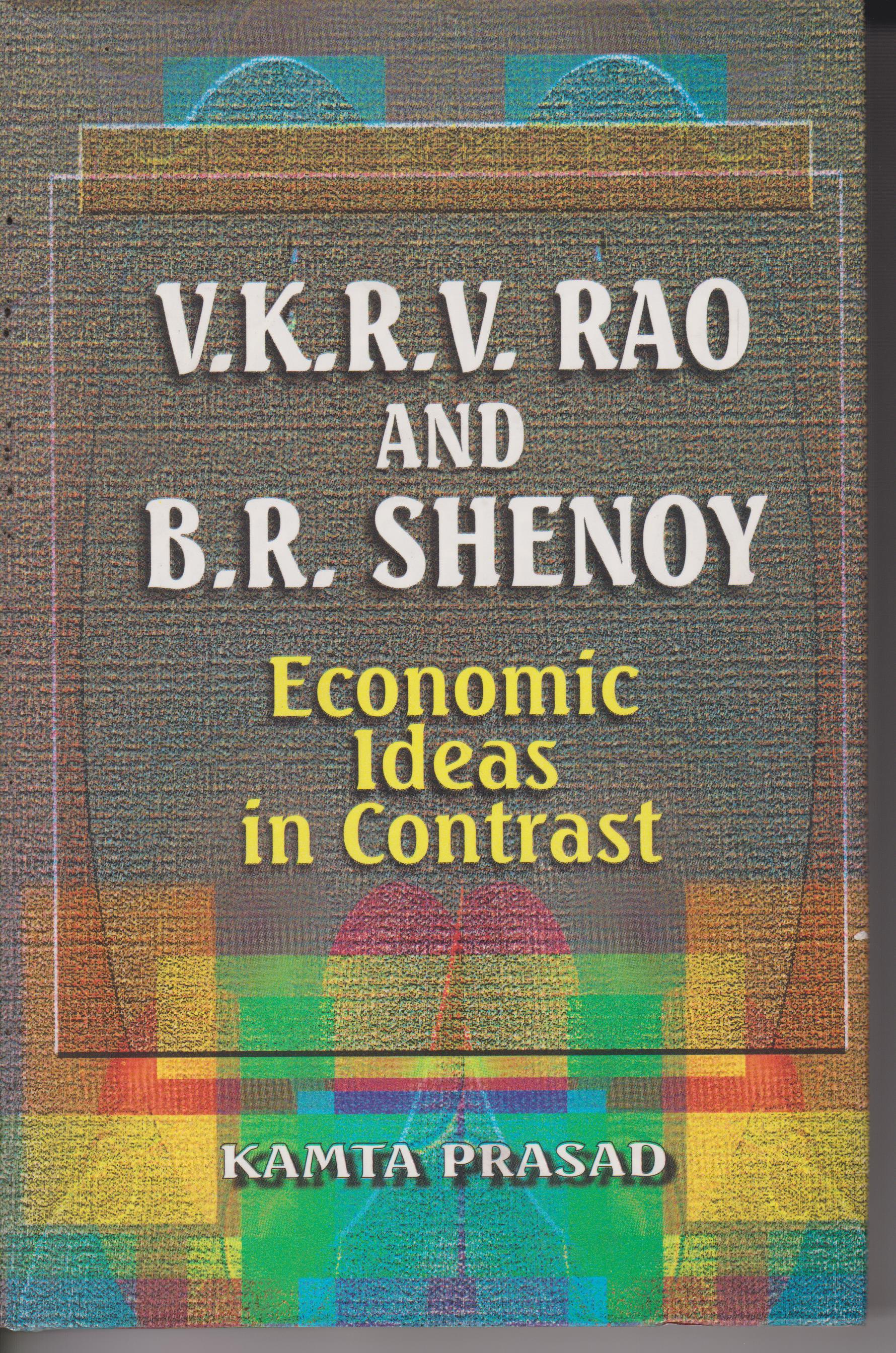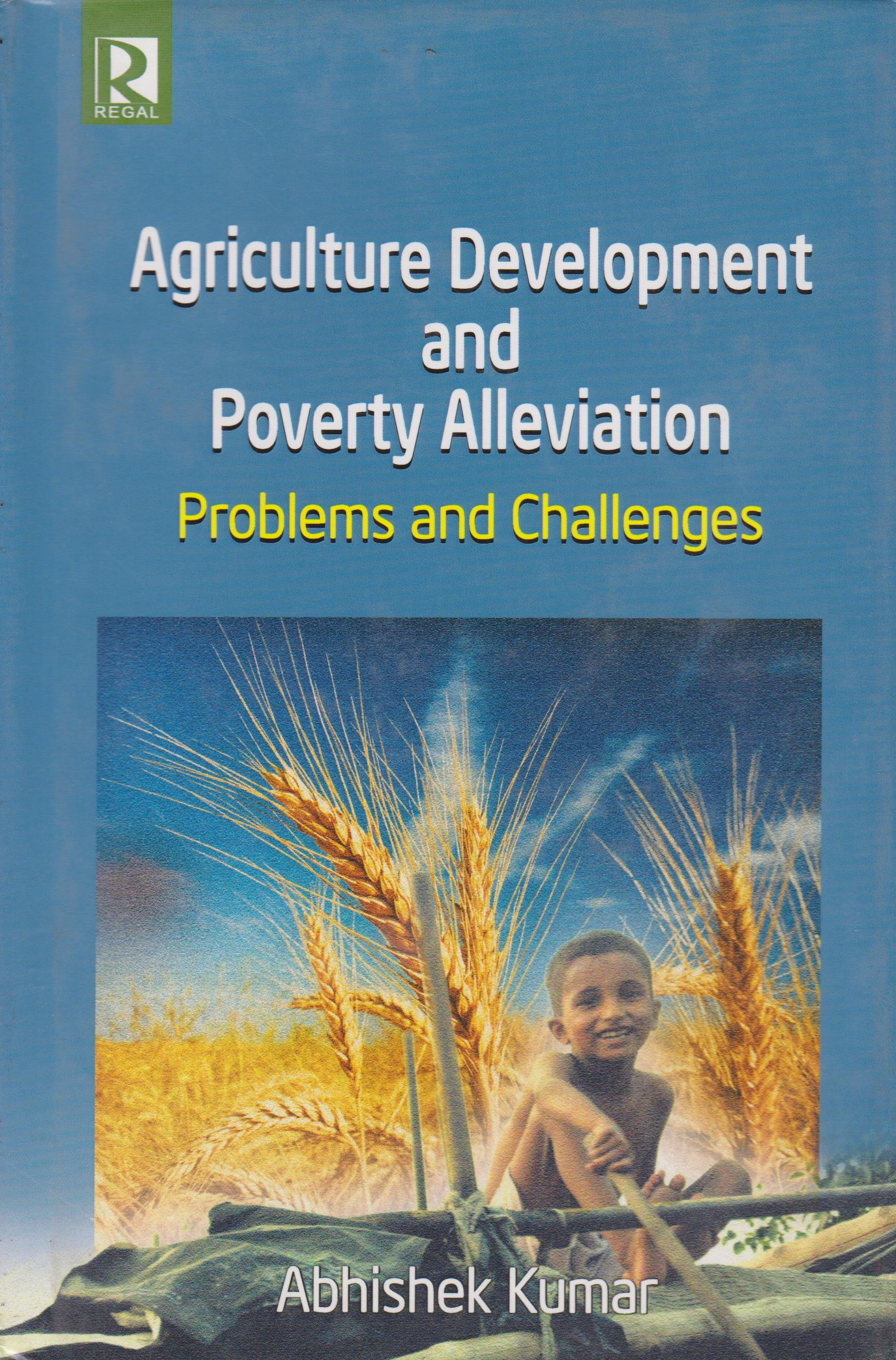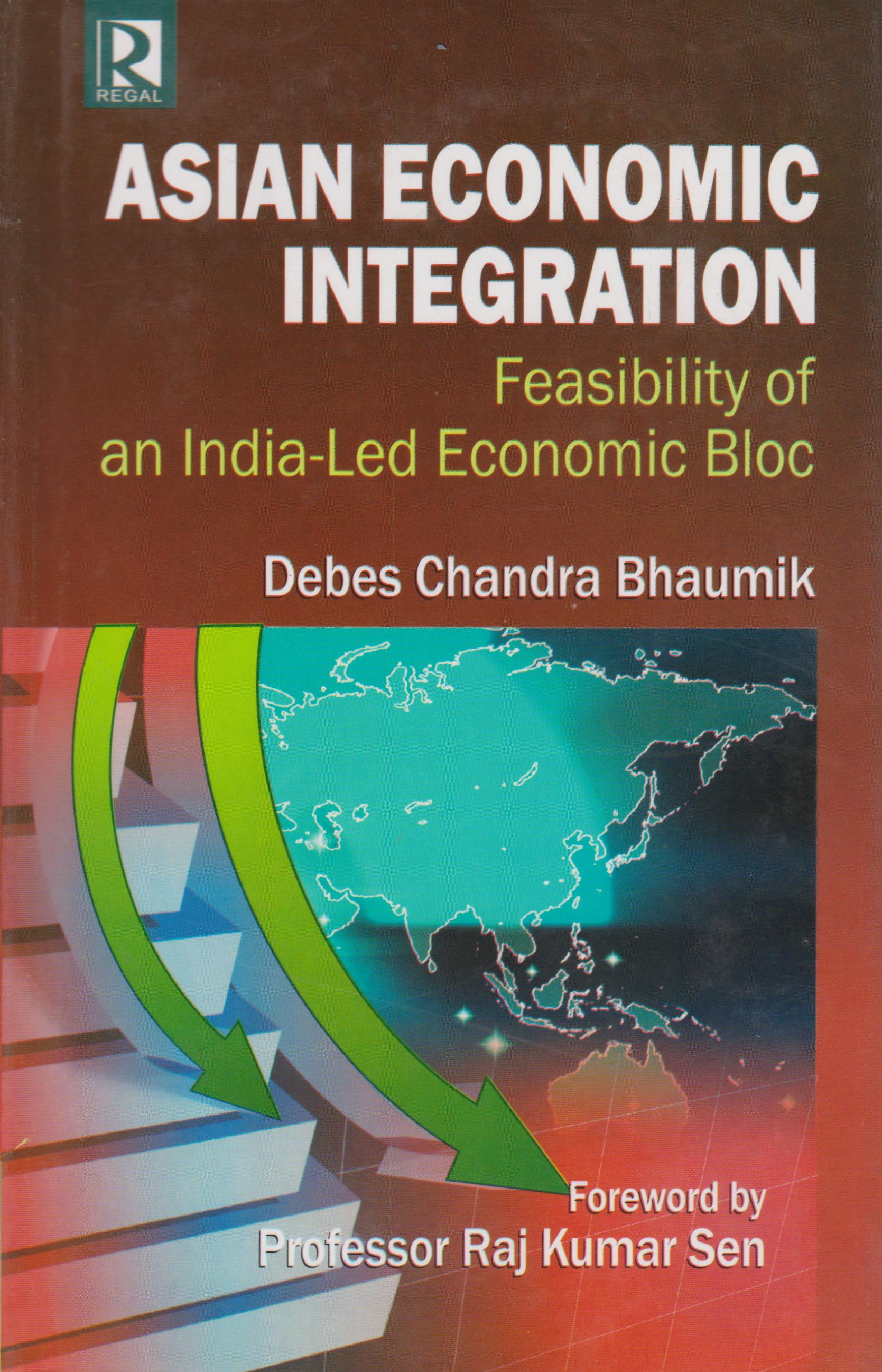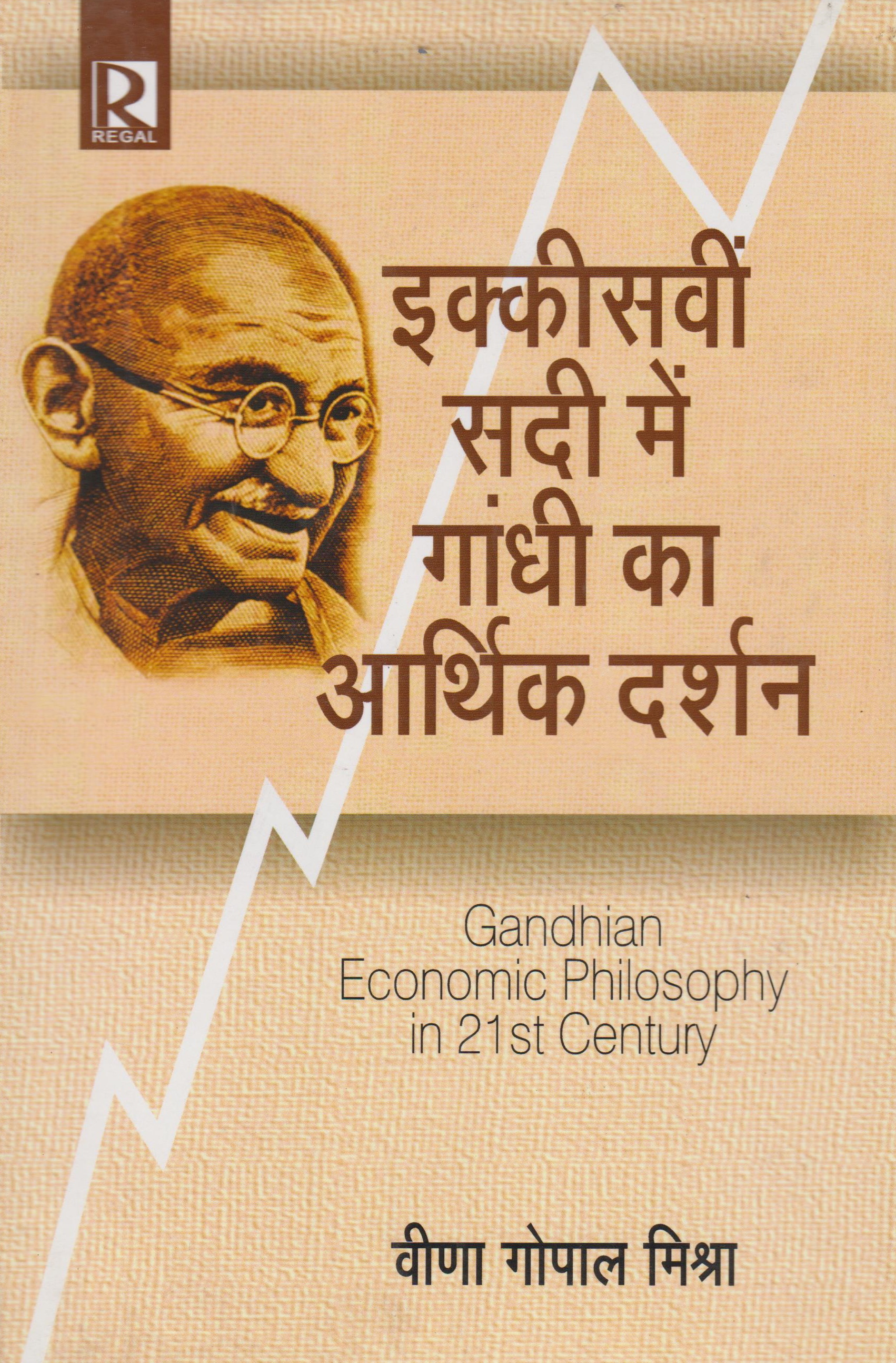Subtotal: ₹1,186
V.K.R.V. Rao and B.R. Shenoy: Economic Ideas in Contrast (Hardcover)
Kamta PrasadOriginal price was: ₹430.₹344Current price is: ₹344.
“V.K.R.V. Rao and B.R. Shenoy: Economic Ideas in Contrast” by Kamta Prasad is a must-read for anyone interested in the economic history of India and the intellectual debates that shaped its economic policies. Prasad’s comprehensive analysis, meticulous research, and accessible writing style make the book a valuable resource for scholars, economists, and general readers alike. The book provides a nuanced understanding of the contrasting perspectives of Rao and Shenoy, allowing readers to appreciate the complexities of economic thought and its impact on India’s development. Overall, “V.K.R.V. Rao and B.R. Shenoy: Economic Ideas in Contrast” is a significant contribution to the field of Indian economic history and a compelling exploration of the ideas of two influential economists.
4 in stock
Description
“V.K.R.V. Rao and B.R. Shenoy: Economic Ideas in Contrast” by Kamta Prasad is a captivating exploration of the economic ideologies and contributions of two renowned Indian economists, V.K.R.V. Rao and B.R. Shenoy. Prasad delves deep into the lives and works of these influential figures, offering a comprehensive analysis of their contrasting perspectives on economic theory and policy. Through meticulous research and insightful commentary, Prasad sheds light on the intellectual journeys of Rao and Shenoy, unveiling the complex dynamics of their ideas and the lasting impact they had on the Indian economy.
In this book, Prasad sets out to examine the contrasting economic philosophies of Rao and Shenoy, highlighting the context in which their ideas emerged and the societal implications of their policy recommendations. By exploring their intellectual backgrounds and examining their major works, Prasad unveils the fundamental differences between the two economists and their approaches to economic development. Through this exploration, readers gain a deeper understanding of the ideological debates that shaped India’s economic landscape during a critical period of its history.
Prasad’s work not only offers a comprehensive analysis of Rao and Shenoy’s economic ideas but also presents a nuanced understanding of their personalities, motivations, and the socio-political environments that shaped their thinking. By weaving together their narratives with their intellectual contributions, Prasad paints a vivid portrait of two economic thinkers who were instrumental in shaping India’s economic policies during the mid-20th century.
The author’s writing style is engaging and accessible, making complex economic concepts understandable to readers from diverse backgrounds. Prasad combines historical context with economic theory, presenting the information cohesively and coherently. This approach allows both economics enthusiasts and general readers to grasp the significance of Rao and Shenoy’s ideas and their lasting impact on India’s economic trajectory.
Overall, “V.K.R.V. Rao and B.R. Shenoy: Economic Ideas in Contrast” explores the economic ideologies of two influential Indian economists. Prasad’s meticulous research, insightful analysis, and engaging writing style make this book a valuable resource for anyone interested in understanding the intellectual debates that shaped India’s economic policies. By highlighting the contrasting perspectives of Rao and Shenoy, Prasad sheds light on the complexities of economic theory and its practical implications, offering readers a deeper appreciation for the contributions of these two remarkable individuals.
“V.K.R.V. Rao and B.R. Shenoy: Economic Ideas in Contrast” by Kamta Prasad offers a comprehensive summary of the economic ideas put forth by V.K.R.V. Rao and B.R. Shenoy, two influential economists in India. Prasad provides an in-depth exploration of their contrasting perspectives, shedding light on their theories and policy recommendations. By examining their intellectual backgrounds, major works, and the socio-political contexts in which they operated, Prasad presents a well-rounded summary of the economic ideas that shaped India’s development.
The book begins by introducing the reader to V.K.R.V. Rao, a prominent economist and policymaker. Prasad delves into Rao’s early life, his education at the London School of Economics, and his subsequent contributions to India’s economic policies. Rao’s focus on centralized planning and state intervention as catalysts for economic growth is explored in detail, along with his advocacy for land reforms and rural development.
In contrast, Prasad also presents the life and ideas of B.R. Shenoy, another influential economist of the time. Shenoy’s classical liberal approach to economics emphasized the importance of free markets, individual liberty, and limited government intervention. The author provides an overview of Shenoy’s academic background, his involvement in policy formulation, and his key contributions to economic thought.
Prasad then delves into the specific economic theories proposed by Rao and Shenoy, highlighting their points of agreement and disagreement. The reader gains insight into their perspectives on topics such as industrialization, agricultural reforms, import substitution, and the role of the state in economic development. Prasad presents a balanced summary of their arguments, giving readers a clear understanding of the divergent economic philosophies advocated by Rao and Shenoy.
Additionally, Prasad explores the impact of Rao and Shenoy’s ideas on Indian economic policy. He examines the extent to which their theories were embraced or rejected by policymakers, and how their intellectual debates influenced the economic direction of the nation. The author also discusses the broader socio-political factors that shaped the reception of their ideas and the subsequent policy outcomes.
Prasad concludes the book by reflecting on the legacies of Rao and Shenoy. He highlights their enduring contributions to economic thought in India and discusses the relevance of their ideas in the contemporary context. Prasad’s comprehensive summary of the economic ideas put forth by Rao and Shenoy provides readers with a solid foundation for understanding the complexities of Indian economic development during the mid-20th century.
“V.K.R.V. Rao and B.R. Shenoy: Economic Ideas in Contrast” presents a well-researched and insightful analysis of the economic ideas of V.K.R.V. Rao and B.R. Shenoy. Prasad’s examination of their contrasting perspectives offers readers a valuable opportunity to understand the ideological debates that shaped India’s economic policies during a critical period.
Prasad’s analysis of Rao’s economic ideas reveals a deep understanding of his intellectual journey and policy prescriptions. The author explores Rao’s belief in the role of the state as a driver of economic development, emphasizing the need for centralized planning and government intervention. Prasad effectively explains the rationale behind Rao’s approach and evaluates its effectiveness in achieving the desired outcomes.
Similarly, Prasad provides a comprehensive analysis of Shenoy’s economic ideas, highlighting his classical liberal perspective and advocacy for free markets and limited government intervention. The author examines Shenoy’s arguments against state control and offers a balanced evaluation of their strengths and weaknesses. Prasad’s analysis enables readers to grasp the nuances of Shenoy’s economic philosophy and its implications for India’s economic development.
The author’s evaluation of the economic ideas put forth by Rao and Shenoy is well-supported and objective. Prasad presents both economists’ perspectives with fairness and clarity, allowing readers to form their judgments based on the evidence presented. The evaluation is grounded in a deep understanding of economic theory and its practical applications, providing readers with a credible assessment of the strengths and weaknesses of each economist’s ideas.
One commendable aspect of Prasad’s analysis is his ability to connect the economic theories of Rao and Shenoy with their broader socio-political contexts. The author effectively explains how the prevailing social, political, and historical factors influenced their thinking and policy recommendations. This contextual analysis adds depth and richness to the evaluation, allowing readers to appreciate the complexities of economic theory in real-world settings.
Overall, Prasad’s analysis and evaluation of Rao and Shenoy’s economic ideas are thorough, well-informed, and balanced. By delving into the nuances of their theories, examining their historical contexts, and evaluating their practical implications, Prasad provides readers with a comprehensive understanding of the intellectual debates that shaped India’s economic landscape.
“V.K.R.V. Rao and B.R. Shenoy: Economic Ideas in Contrast” by Kamta Prasad presents a fascinating comparison of the economic ideas put forth by V.K.R.V. Rao and B.R. Shenoy, two prominent Indian economists of the mid-20th century. Prasad explores their contrasting perspectives on economic theory and policy, shedding light on the similarities, differences, and debates that defined their intellectual contributions.
One key aspect of the comparison lies in their views on the role of the state in economic development. Rao advocated for a strong state presence and centralized planning as drivers of growth, emphasizing the need for government intervention to address market failures and promote equitable outcomes. In contrast, Shenoy’s classical liberal perspective emphasized the importance of free markets, limited government intervention, and individual liberty. This fundamental difference in their views on the role of the state forms the crux of the comparison, revealing the divergent paths they believed India should take to achieve economic prosperity.
Another important dimension of the comparison lies in their views on industrialization and agricultural reforms. Rao placed significant emphasis on industrialization as a means to achieve self-reliance and economic growth. He advocated for the establishment of public sector enterprises and state-led industrialization. Shenoy, on the other hand, emphasized the importance of agricultural reforms and the development of a vibrant agricultural sector as the foundation for overall economic development. This comparison highlights the contrasting priorities and approaches they espoused in their economic theories.
Furthermore, the comparison extends to their perspectives on import substitution and international trade. Rao favoured import substitution policies, aiming to reduce dependence on foreign goods and develop domestic industries. Shenoy, however, argued for the liberalization of trade and integration into the global economy, advocating for the benefits of free trade and the removal of barriers to international commerce. This aspect of the comparison reveals their differing views on the role of international trade in economic development.
Prasad effectively compares and contrasts the economic ideas of Rao and Shenoy by providing a thorough analysis of their theories, policy recommendations, and underlying rationales. The comparison allows readers to gain a comprehensive understanding of the divergent paths proposed by these economists and the implications of their ideas for India’s economic development.
“V.K.R.V. Rao and B.R. Shenoy: Economic Ideas in Contrast” by Kamta Prasad offers a rich interpretation of the economic ideas put forth by V.K.R.V. Rao and B.R. Shenoy. Prasad explores the underlying themes and ideologies that shaped their theories, shedding light on the broader implications for Indian economic development during the mid-20th century.
One prominent theme that emerges from the interpretation of Rao’s ideas is the belief in the role of the state as a catalyst for economic growth and social welfare. Rao’s emphasis on centralized planning and government intervention reflects his conviction that the state should play an active role in shaping the trajectory of the economy. This theme highlights the tension between state-led development and market-driven growth, a fundamental debate that has influenced economic policymaking in India.
Another theme that emerges from the interpretation of Shenoy’s ideas is the belief in the power of free markets and individual liberty. Shenoy’s classical liberal perspective emphasizes the importance of limited government intervention, allowing market forces to determine the allocation of resources and promote economic efficiency. This theme underscores the tension between state control and market freedom, illustrating the ongoing debate about the appropriate balance between government intervention and market forces in economic policy.
Furthermore, the interpretation of Rao and Shenoy’s ideas reveals the underlying theme of social justice and equity. Both economists were driven by a desire to address the inequalities and disparities prevalent in Indian society. While their approaches differed, with Rao focusing on land reforms and rural development, and Shenoy advocating for market-led growth, the theme of equity and inclusivity underlies their economic theories. This theme reflects the broader societal aspirations for a more just and equitable economic order.
Prasad’s interpretation of the economic ideas of Rao and Shenoy brings to the forefront these and other underlying themes, allowing readers to appreciate the complexities and nuances of their theories. By exploring these themes, the book offers insights into the intellectual and ideological currents that shaped India’s economic landscape and continue to influence economic policymaking today.
“V.K.R.V. Rao and B.R. Shenoy: Economic Ideas in Contrast” not only examines the economic ideas of V.K.R.V. Rao and B.R. Shenoy but also provides a nuanced understanding of these two prominent economists as characters. Prasad delves into their personal narratives, motivations, and the socio-political contexts that influenced their thinking, offering readers a deeper insight into their lives and the factors that shaped their economic perspectives.
V.K.R.V. Rao, as portrayed by Prasad, emerges as an influential figure in Indian economic thought. The author presents Rao’s early life, his education at the London School of Economics, and his subsequent contributions as a policymaker and institution-builder. Rao’s character is characterized by his commitment to social justice and his belief in the transformative power of the state. Prasad highlights Rao’s dedication to addressing rural poverty and land reforms, emphasizing his desire to create a more equitable society through state-led interventions.
B.R. Shenoy, on the other hand, is depicted as a strong proponent of classical liberal economics. Prasad explores Shenoy’s academic background, his involvement in economic policy formulation, and his intellectual contributions. Shenoy’s character is portrayed as an advocate for free markets, limited government intervention, and individual liberty. The author highlights Shenoy’s conviction in the power of market forces to drive economic growth and his scepticism towards excessive state control.
Through their characterization, Prasad brings to life the personalities and motivations of Rao and Shenoy, allowing readers to understand the individuals behind the economic ideas. This characterization adds depth and richness to the narrative, providing a more holistic understanding of the contexts in which their ideas emerged and the influence of their personal beliefs on their economic theories.
The author’s portrayal of these characters is balanced and nuanced, capturing both their strengths and limitations. Prasad acknowledges the complexities of their intellectual journeys and avoids simplistic characterizations. This approach allows readers to appreciate the multifaceted nature of these economists and the nuanced debates that unfolded between them.
About the Author:
Kamta Prasad, the author of “V.K.R.V. Rao and B.R. Shenoy: Economic Ideas in Contrast,” is a respected scholar and economist with a deep understanding of Indian economic history. Prasad has dedicated his career to researching and teaching economics, particularly focusing on the intellectual and policy debates that shaped India’s economic trajectory.
Prasad’s academic background and expertise in the field of economics are evident in the meticulous research and analysis presented in the book. His ability to synthesize complex economic ideas and present them in an accessible manner showcases his communicator and educator skills. Prasad’s dedication to providing a comprehensive exploration of Rao and Shenoy’s economic ideas is evident throughout the book, reflecting his passion for understanding and interpreting the contributions of these two economists.
As an author, Prasad demonstrates a keen eye for detail and a commitment to academic rigor. The book is extensively researched, drawing on a wide range of primary and secondary sources to provide a comprehensive analysis of Rao and Shenoy’s ideas. Prasad’s depth of knowledge and expertise in the subject matter shines through in his writing, making “V.K.R.V. Rao and B.R. Shenoy: Economic Ideas in Contrast” a valuable contribution to the field of Indian economic history.
Prasad’s dedication to scholarly inquiry and his commitment to presenting a balanced perspective is notable. His ability to navigate the complexities of economic theory and policy, while remaining accessible to a wide range of readers, is a testament to his skill as a writer. Prasad’s expertise and passion for the subject matter make him a reliable guide through the intellectual debates and historical context that surround the economic ideas of Rao and Shenoy.
Kamta Prasad’s writing style in “V.K.R.V. Rao and B.R. Shenoy: Economic Ideas in Contrast” is engaging, informative, and accessible. Prasad demonstrates his skill as a writer by presenting complex economic concepts clearly and coherently, making the book accessible to readers with varying levels of economic knowledge.
Prasad’s writing is characterized by its clarity and conciseness. He avoids unnecessary jargon and technical language, ensuring that readers can easily grasp the key ideas and arguments presented. The author’s ability to distil complex economic theories into understandable explanations is commendable, allowing readers to engage with the material without feeling overwhelmed.
The book is organized logically and structured, with each chapter building upon the previous ones. Prasad’s writing flows smoothly, guiding readers through the historical and theoretical aspects of Rao and Shenoy’s economic ideas. The author effectively uses headings, subheadings, and transitions to maintain coherence and facilitate understanding.
Prasad’s writing style is also characterized by his attention to detail and meticulous research. The book is supported by a wealth of primary and secondary sources, including scholarly works, archival materials, and interviews. This extensive research adds depth and credibility to the author’s arguments, making the book a reliable and authoritative resource.
Prasad’s writing style strikes a balance between academic rigor and readability. While the book is firmly grounded in economic theory and historical context, Prasad ensures that the material remains engaging and accessible to a broader audience. This makes “V.K.R.V. Rao and B.R. Shenoy: Economic Ideas in Contrast” a valuable resource for both scholars and general readers interested in Indian economic history and the ideas of Rao and Shenoy.
What People Say About This Book:
“V.K.R.V. Rao and B.R. Shenoy: Economic Ideas in Contrast” by Kamta Prasad has garnered high praise from readers and experts in the field of economics. The book has been widely recognized for its comprehensive analysis, insightful commentary, and the clarity with which it presents complex economic ideas.
Economists and scholars have commended Prasad’s ability to navigate the nuanced debates and contrasting perspectives of Rao and Shenoy. The book has been lauded for its meticulous research, drawing from a diverse range of sources to provide a well-rounded understanding of the economic ideas of these two influential thinkers. Readers appreciate the balanced and objective evaluation of Rao and Shenoy’s theories, which allows them to form their own opinions and gain a deeper understanding of the complexities of economic thought.
The accessibility of Prasad’s writing style has also been praised by both economics enthusiasts and general readers. The author’s skill in presenting complex economic concepts clearly and coherently has made the book approachable to a wide audience. Readers have found the book engaging and enlightening, enabling them to grasp the significance of Rao and Shenoy’s ideas and their impact on India’s economic development.
Overall, the book has received positive feedback for its comprehensive analysis, meticulous research, and accessible writing style. It has been recognized as a valuable resource for anyone interested in understanding the intellectual debates that shaped India’s economic policies and the contributions of Rao and Shenoy.
- Comprehensive analysis of the economic ideas of Rao and Shenoy.
- Meticulous research and extensive use of primary and secondary sources.
- Balanced and objective evaluation of their theories and policy recommendations.
- Clear and accessible writing style that makes complex economic concepts understandable.
- Engaging and informative exploration of the socio-political contexts that influenced their thinking.

 Growth, Equity and Social Justice in India
Growth, Equity and Social Justice in India 








Reviews
There are no reviews yet.